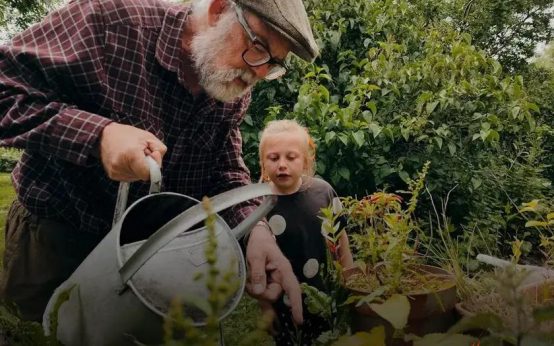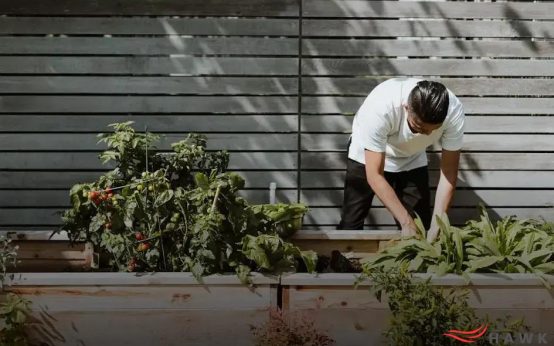Growing your own food has numerous benefits for families. From healthier meals to cost savings, the advantages are plentiful. Starting a garden provides a unique opportunity for family bonding, while also contributing positively to the environment. Whether you’re planting herbs or vegetables, you’ll experience the joy of nurturing plants and the satisfaction of eating home-grown produce. Explore the benefits of cultivating your garden and improve your family’s well-being.
Why Home-grown Food is Healthier
Nutrient Density: Home-grown food often contains more nutrients than store-bought produce. Store produce can lose nutrients during transportation and storage. By picking vegetables and fruits directly from your garden, you ensure they are fresh and packed with vitamins. Freshly harvested produce can have higher levels of vitamin C and antioxidants, which are critical for maintaining health and preventing disease.
Variety and Taste: Store-bought produce is often chosen for its shelf life and appearance, not flavor. Growing your own food allows you to select varieties based on taste. Heirloom varieties and exotic plants that are not available in stores can be grown, providing unique flavors and experiences. Home gardeners often express that tomatoes, for example, taste far superior when home-grown.
Seasonal Eating: Growing your own food encourages you and your family to eat with the seasons. Seasonal eating can offer numerous health benefits, as it often means consuming fruits and vegetables at their peak freshness and nutritional content. Learning to appreciate and utilize seasonal produce is not only healthier but more sustainable.
Cost Savings from a Backyard Garden

One significant advantage of having a backyard garden is the potential for cost savings. By growing your own vegetables and herbs, families can reduce their grocery bills.
Producing Your Own Produce
Purchasing seeds or seedlings is a small initial investment compared to the continuous expense of buying fresh produce from the market. Moreover, many plants, such as tomatoes, cucumbers, and peppers, can yield a substantial amount of food from just a few plants.
Additionally, a home garden reduces the need for frequent trips to the store, saving on travel costs. Families also have control over what they grow, enabling them to prioritize plants that are typically more expensive when purchased, like organic produce.
Preservation Techniques can further enhance savings. Families can can or freeze surplus produce, extending the benefits of their garden throughout the year. For example, home-grown herbs and lettuces can be dried or stored for later use, thereby ensuring that families do not need to buy these items off-season.
Finally, gardening can encourage seasonal eating, aligning with a reduction in costs associated with out-of-season produce that is usually imported and priced higher. A garden can thus significantly cut down on overall family expenses linked to fruits and vegetables.
Family Bonding Through Gardening
Gardening together as a family can significantly enhance family bonds. When parents and children work side by side, planting seeds and nurturing plants, it creates an atmosphere of cooperation and shared goals. This mutual activity not only helps in fostering teamwork but also encourages communication among family members.
By engaging in gardening, families spend more quality time together. Away from screens and digital distractions, this activity opens up opportunities for meaningful conversations and teaches valuable life skills. Children learn patience and responsibility as they watch their tiny seeds grow with time and care.
Gardening is also a way to create lasting memories. From planting to harvesting, every step in the process becomes a story to share. As families witness the growth and transformation of their plants, they celebrate milestones together, building a sense of pride and accomplishment.
Furthermore, it’s an opportunity for educational experiences. Parents can teach children about the different types of plants, the life cycle of a plant, and the importance of sustainable practices. This hands-on learning experience can spark curiosity and an interest in nature and science.
By working together towards a common goal, such as growing their own food, families develop a sense of unity. The shared responsibility of caring for a garden helps strengthen relationships, making family gardening a powerful method of reinforcing family ties.
Environmental Impact of Growing Your Own Food

Growing your own food has a significant environmental impact. By cultivating food at home, families can reduce their carbon footprint. Transporting food from farms to supermarkets involves burning fossil fuels, contributing to pollution.
When families grow fruits and vegetables in their backyard, they help minimize these emissions. It also reduces the need for packaging, often made from materials that take a long time to decompose.
Using composting techniques, you can manage kitchen waste sustainably, turning it into valuable nutrients for your garden. This practice reduces landfill waste and cuts greenhouse gas emissions.
The use of chemical fertilizers and pesticides on large farms can harm the soil and water sources. In contrast, home gardens often use more natural methods for pest control and soil health, such as crop rotation, natural predators, and organic fertilizers.
Planting a diverse range of crops at home can support local biodiversity, attracting beneficial insects and creating habitats for local wildlife. This helps maintain the ecological balance in your community.
Getting Started: Tips for Family Gardening
Starting a family garden can be a rewarding venture for all members of the household. Whether you already have a green thumb or are just beginning, there are effective steps you can follow to ensure success.
- Choose the Right Location: Selecting a site with ample sunlight is crucial. Research shows that most vegetables need at least 6-8 hours of sun daily.
- Prepare Your Soil: Investigate your soil type. Most plants thrive in loose, well-drained soil rich in organic material.
- Start with Easy Plants: Begin with vegetables like tomatoes, cucumbers, or carrots. These are relatively easy to grow and can boost your family’s confidence.
- Consider the Climate: Be aware of your local climate and growing zone. Planting at the right time ensures the best yield.
- Engage the Whole Family: Encourage every family member to participate. Children can help plant seeds and water plants, fostering a love for nature and teamwork.
By following these tips, families can cultivate a successful and rewarding garden while benefiting from fresh, homegrown produce.





